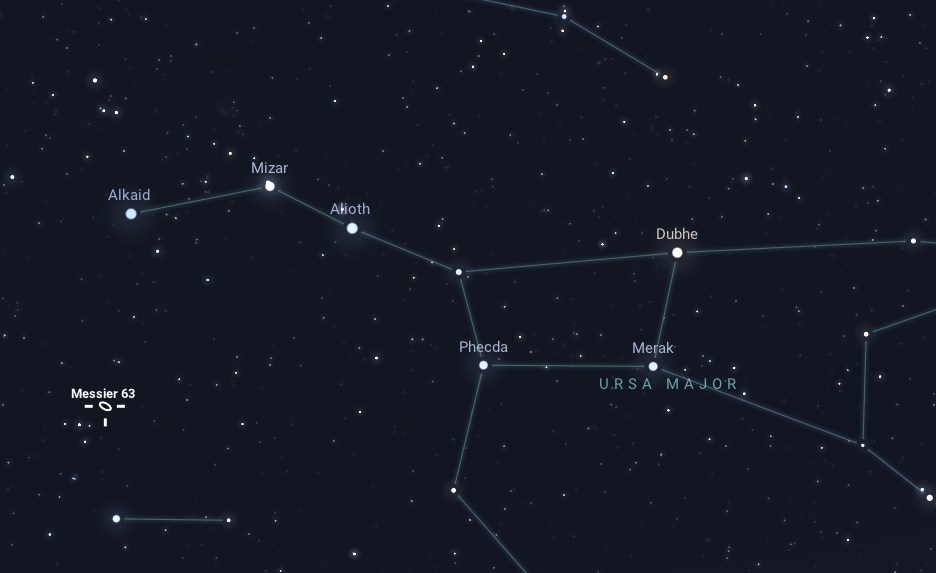The M63 galaxy, also known as NGC 5055 or the Sunflower Galaxy, is a striking and well-studied spiral galaxy located in the constellation Canes Venatici. Here’s an overview of M63:
Basic Characteristics
M63 is classified as an unbarred spiral galaxy with the morphological type SAbc, indicating it has moderately to loosely wound spiral arms. It is located approximately 29 million light years away from Earth, and spans about 97,000 light years in diameter, making it slightly smaller than our Milky Way galaxy.
Structure and Composition
M63 has a bright nucleus and well-defined spiral arms that are rich in dust and star-forming regions. Its appearance, resembling a sunflower, gives it its popular name. The spiral arms contain numerous H II regions (areas of ionized hydrogen gas) where active star formation is taking place. These regions are visible as bright knots along the arms. As the galaxy contains significant amounts of dust and gas, the dust lanes are particularly noticeable in images of M63.
Recent observations have revealed a faint, extended halo around M63, composed of older stars. This halo is likely the remnant of past interactions and mergers with smaller galaxies.
The spiral structure is asymmetric, with one side of the galaxy showing more pronounced spiral arms than the other. This asymmetry is thought to be caused by gravitational interactions with nearby galaxies or internal dynamics.
Studies of M63’s rotation curve indicate the presence of dark matter. The rotation speeds of stars and gas in the outer regions are higher than what would be expected based solely on the visible matter.
There is evidence suggesting that M63 may host a low-luminosity active galactic nucleus (AGN). This is indicated by the detection of weak X-ray emissions from the central region, possibly hinting at the presence of a supermassive black hole.
M63 has also hosted a few notable supernovae, contributing valuable data to the study of stellar evolution. SN 1971I, a Type I supernova observed in the galaxy, provides insights into the end stages of massive stars.
Observational History
The Sunflower galaxy was discovered by the French astronomer Pierre Méchain on June 14, 1779. It was later included in Charles Messier’s catalog of comet-like objects as the 63rd entry.
The galaxy has been a subject of interest for both amateur and professional astronomers, observed across multiple wavelengths including optical, infrared, radio, and X-ray.
When to Observe
The best time to observe M63 is during the spring months (March to May) in the northern hemisphere when Canes Venatici is high in the night sky. Alkaid, the star at the end of the Big Dipper’s handle in the constellation Ursa Major, can be used as a reference point to locate M63.
The galaxy is visible through small to medium-sized telescopes. It appears as a faint, elongated patch of light with a brighter core.




